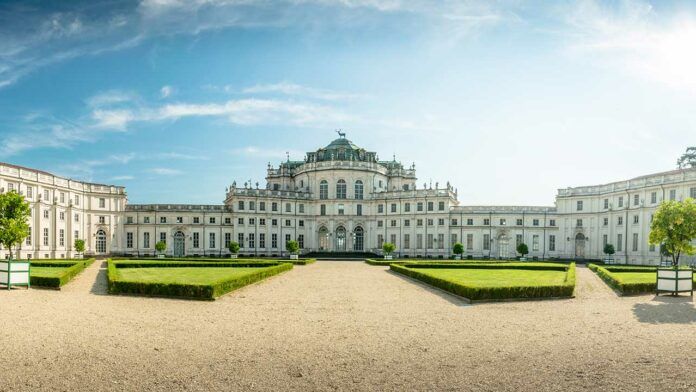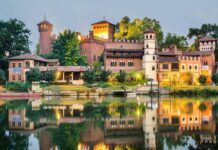In addition to offering an overview of olden-day court life, La Venaria Reale, the Palazzina di Caccia di Stupinigi and the Castello di Rivoli testify to the modern history of Piedmont and Italy.
The Royal Residences are easily accessible by bus or car from Turin and are among some of the best-preserved examples of 17th and 18th-century European architecture. They are a living testimony to the prestige of the local monarchy, the Savoy family, the first kings of unified Italy. In addition to Castello del Valentino and Villa della Regina, the favourite city-based residences of duchesses and princesses, and the fortress of Castello di Moncalieri, the Regge Sabaude complex, listed as a UNESCO World Heritage site in 1997, includes hunting lodges and country residences, embellished with gardens that reflect the sophistication of courtly life.
Located inside the Park of La Mandria, in the historic centre of the town of Venaria, the Reggia di Venaria Reale is a Baroque-style complex built in the mid-17th century as a glorified hunting lodge for Carlo Emanuele II. Its present-day appearance is the result of work by several prominent architects of the era, including Amedeo di Castellamonte, Michelangelo Garove and lastly Filippo Juvarra, who designed many of its most beautiful and widely photographed spaces, including the Grand Gallery, the Chapel of Saint Hubert and the imposing 18th-century complexes of the Juvarra Stables and the Citroniera (Orangerie), now used to host exhibitions and events.
The Palazzina di Caccia di Stupinigi was built in Baroque style in 1729 and is only 10km as the crow flies from Piazza Castello. In addition to being used for long hunting expeditions in the company of members of the local aristocracy, Stupinigi was often chosen by members of the Savoy household for celebrations and dynastic weddings. At the beginning of the 20th century, Queen Margherita of Savoy took up permanent residence here. In 1919, Stupinigi became the headquarters of the Furniture Museum and a space for events and concerts. In addition to its original furnishings and paintings, the museum hosts several masterpieces of cabinetry. The lodge’s beautifully manicured French gardens and internal spaces are open for public viewing, while its historic park, a part of the hunting reserve, is closed to the public.
Established as a military fortress in 1247, the Castello di Rivoli was the first residence of the Savoy Duchy. During the 17th century, it was converted into an aristocratic residence, and enlarged with the addition of a wing known as the Manica Lunga, with the ducal picture gallery. Its imposing spaces are now the headquarters of a Museum of Contemporary Art, which also hosts temporary exhibitions.











